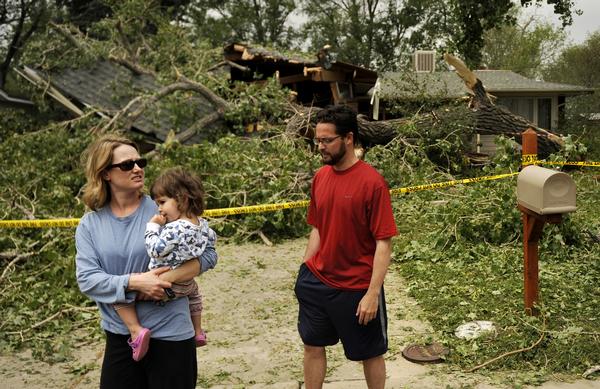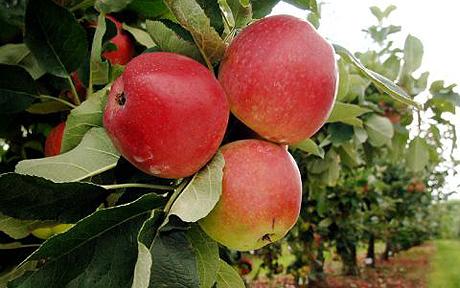
© Joe Amon, The Denver PostMichelle Ziporin holds daughter Emily, 2, as she and husband Eric await an evaluation of damage to their Lakewood home.
The storm that spawned two tornadoes, uprooted trees, damaged vehicles and downed power lines in the Denver area Monday night may not get in the record books.
But it was a doozy.
"We have had storms where we lost some branches, but I never have seen anything like this, and I have been here since 1955," said Mary Stephens, who had to shovel hail away from a sliding door at her Wheat Ridge home.
Arvada, Lakewood, Englewood and Wheat Ridge were hardest hit, said Carole Walker, executive director of the Rocky Mountain Insurance Information Association.
Tornado sirens blasted in some areas as a line of severe thunderstorms bore down on Denver's western suburbs.
Lakewood officials decided not to trigger the alarms because no tornadoes or funnel clouds were nearby, police spokesman Steve Davis said.
"Today, looking over the extent of the damage from the storm, the feeling is we wish we would have set them off," he said.
Sirens blared in Englewood, but in Arvada there is no outdoor warning system.
"We opted to go with the option of not utilizing sirens, and instead using the media, the emergency alert system and coordinating closely with the National Weather Service and their broadcast warnings," said Arvada police spokeswoman Susan Medina.
Along West 32nd Avenue off Kipling Street, reminders of the storm were everywhere Tuesday morning: thick drifts of hail, shredded leaves, uprooted trees and downed limbs jutting from lawns.


